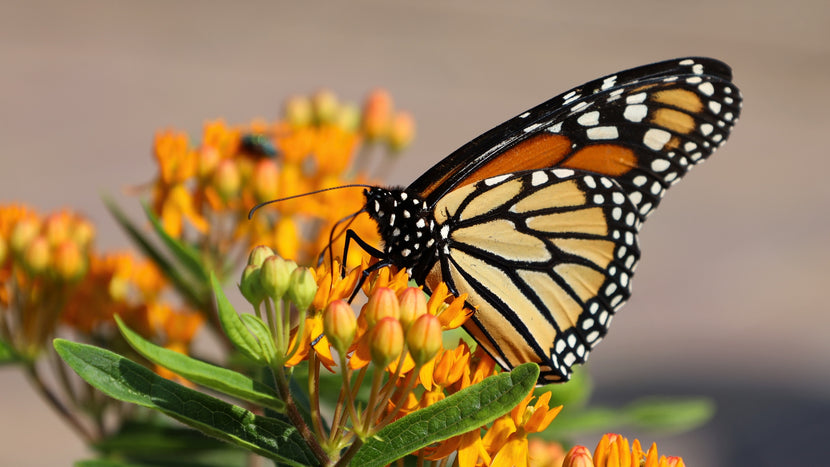
What's Happening To The Monarch Butterflies
When butterfly species come to mind, often the first ones we think of are the monarch butterflies. Sporting their prominent orange and black dark veiny wings with white spotted edges, these immaculate pollinators are hard to miss!
But unfortunately, the monarch butterfly is on the road to extinction. Keep reading as we delve into the rapid decline of these butterflies, along with the steps we can take to help.
The Great Monarch Butterfly Migration

As one of the most well-known insects in the world, the monarch butterflies are praised for more than just their beauty. The real spectacle of these creatures is their innate ability to migrate near 3,000 miles to Mexico each year.
Their fall migration follows their breeding time in Canada and the US in spring and summer. Come October, massive fleets of monarch butterflies make the trek south to the forests of Mexico, where they live and hibernate for six to eight months, only to do it all over again the following year!
Battling the natural demons of weather, limited daylight, and predators, it is truly an impressive feat that the monarch butterflies are capable of making the trek. But the monarchs are in trouble.
Why Are The Monarch Butterflies Declining?
In the past two decades, the monarch population has declined 85%. The number one reason for this decline–the loss of milkweed habitats.
Due to a dramatic increase in the use of herbicide-resistant crops like Roundup, Milkweed is dying rapidly along the migration routes of the monarch butterflies.
Asclepias incarnata, more commonly known as ‘Milkweed’ or “Butterfly Weed’ is absolutely essential to the monarch population. Milkweed is so important because it is the ONLY food source for monarch caterpillars and the sole place for monarchs to lay their eggs. As pesticide use increases, the ability of milkweed to survive decreases greatly.
Beyond the mass killing of milkweed plants, the monarchs are threatened by global climate change, deforestation, and habitat loss in their breeding grounds and hibernation locations.
How Can You Help The Monarch Butterflies
While the decline of the monarch butterfly population goes far beyond what one person can do, little steps that you take in your own garden can certainly help.

1. Plant Milkweed
The best thing you can do to aid the Monarch butterflies is plant their only food source: milkweed. Plants in the milkweed family are the host plant for monarch caterpillars.
2. Incorporate Nectar Plants
Once your caterpillars transition into butterflies, they will need nectar! Select long-blooming flowering plants like echinacea and rudbeckia to ensure a late summer to early fall food source for your hungry pollinators.

3. Diversify Your Garden
Just like you enjoy a range of flavors, colors, and textures in your diet, butterflies also enjoy a diverse range of flowers that they indulge in.
4. Go Organic
Many pesticides and chemical sprays, such as mosquito deterrents, also kill beneficial insects ranging from bees, caterpillars, butterflies, and fireflies. Instead of using harsh chemicals, you could opt for natural pest prevention like incorporating ladybugs into your garden!

5. Plant Native
We likely sound like a broken record with this one… but there are endless benefits to planting native in your garden! Help the butterflies and watch as your plants grow with ease when you choose to plant native in the garden.
6. Spread The Word
Our last note as a means of aiding the Monarch Butterflies rebuild their population, is the urge to spread the word on the issues at hand. Speaking out on the rapid decline and urging others to plant for the butterflies can make a huge difference in the overall well-being of our pollinators.
Help Support The Monarchs Today
Whatever you decide to do in the garden this season, we hope you plant with your local pollinators in mind. Here at Garden Goods Direct, we carry a wide range of pollinator-friendly plants that can work to support local ecosystems. Shop online today and enjoy convenient shipment directly to your front door!
